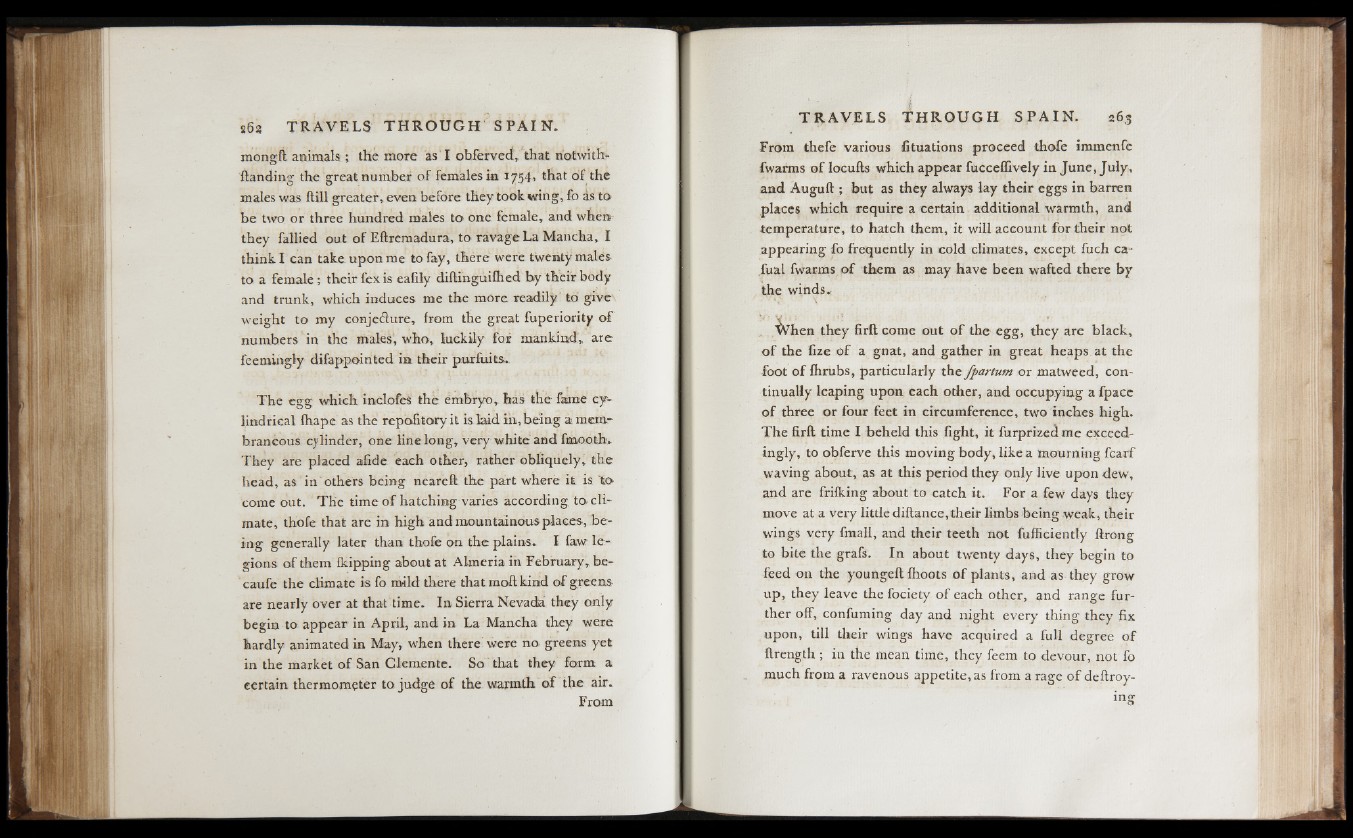
mongft animals; the more as I obfervecf, that notwith-
ftanding the great number o f females in 17541 that of the
males was ftill greater, even before they took wing, fo as to
be two or three hundred males to one female, and when
they fallied out o f Eftremadura, to ravage La Mancha, I
think I can take upon me to fay, there were twenty males
to a female ; their fexis eaiily diftingùiflied by their body
and trunk, which induces me the more readily to give
weight to my conjecture, from the great fuperiority o f
numbers in the males’, who, luckily for mankind,, are
feemingly difappointed in their purfuits.
The egg which inclofeS thè embryo, has the fame cylindrical
fhape as the repbfitoryit is laid in, being a membraneous
cylinder, one line long, very white and fmootb.
They are placed afide each other, rather obliquely, the
head, as in others being neareft the part where it is to
come out. The time of hatching varies according to climate,
thofe that are in high and mountainous places , being
generally later than thofe on the plains. I faw le gions
of them fkipping about at Almeria in February, be-
caufe the climate is fo mild there that moft kind of greens
are nearly over at that time. In Sierra Nevada they only
begin to appear in April, and in La Mancha they were
hardly animated in May, when there were no greens yet
in the market of San Clemente. So that they form a
certain thermometer to judge of the warmth of the air.
From
From thefe various fituations proceed thofe immenfe
fwarms o f locufts which appear fucceffively in June, July,
and Auguft ; but as they always lay their eggs in barren
places which require a certain additional warmth, and
temperature, to hatch them, it will account for their not
appearing fo frequently in cold climates, except fuch casual
fwarms o f them as may have been wafted there by
the winds..
■When they firft come out o f the egg, they are black,
o f the fize o f a gnat, and gather in great heaps at the
foot of fhrubs, particularly the fpartum or matweed, continually
leaping upon each other, and occupying a fpace
o f three or four feet in circumference, two inches high.
The firft time I beheld this fight, it furprizedme exceedingly,
to obferve this moving body, like a mourning fcarf
waving about, as at this period they only live upon dew,
and are frifking about to catch it. For a few days they
move at a very little diftance, their limbs being weak, their
wings very fmall, and their teeth not fufficiently ftrong
to bite the grafs. In about twenty days, they begin to
feed on the youngeft fhoots o f plants, and as they grow
up, they leave the fociety o f each other, and range further
off, confirming day and night every thing they fix
upon, till their wings have acquired a full degree o f
ftrength ; in the mean time, they feem to devour, not fo
much from a ravenous appetite, as from a rage of deftroy